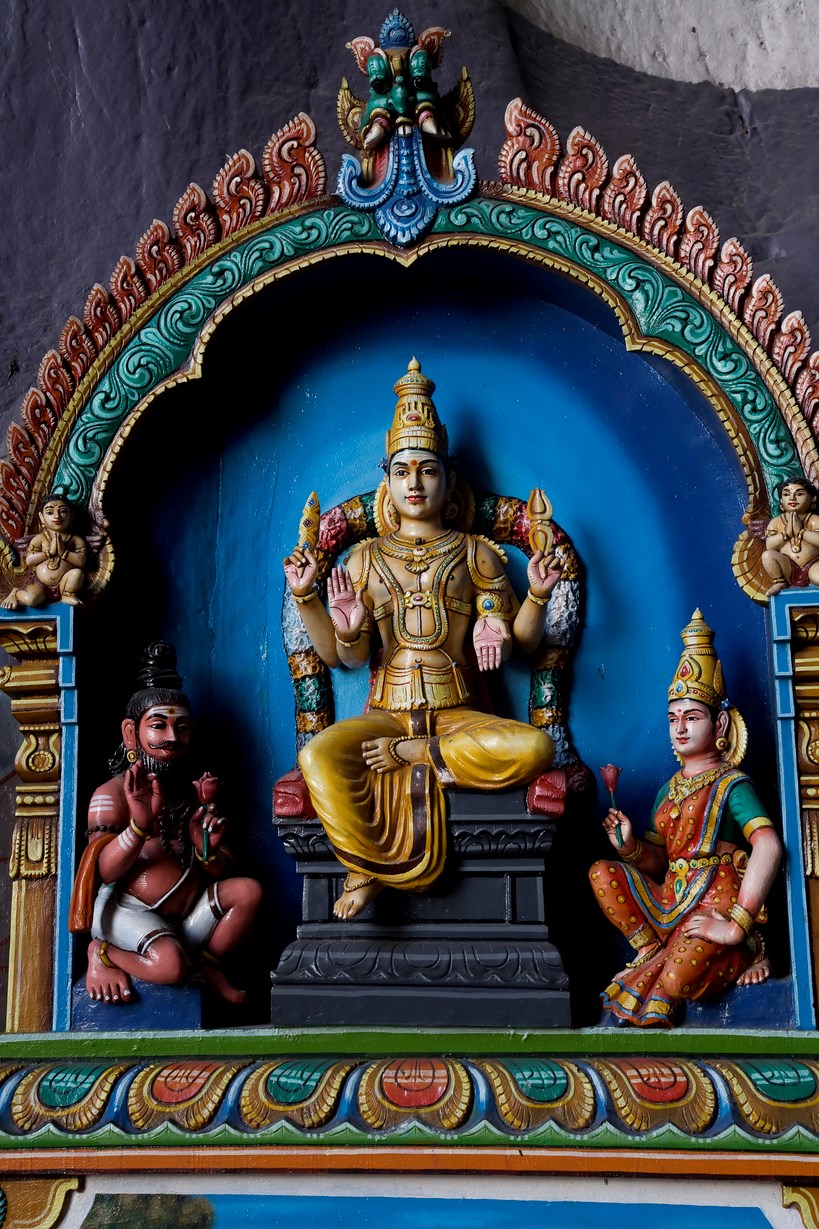 One of the usual questions from audiences of all ages, whenever I give talks on Hinduism, is “Why do you have so many deities?” A follow up question is “Why do Goddesses have four arms?” What they want to know is: why do Hindus worship an idol (of a diety) – an idol made of clay or carved out of stone, a deity that looks like a human, except for the occasional god with an animal head (such as elephant or monkey), or goddess with four arms, or god blue face.
One of the usual questions from audiences of all ages, whenever I give talks on Hinduism, is “Why do you have so many deities?” A follow up question is “Why do Goddesses have four arms?” What they want to know is: why do Hindus worship an idol (of a diety) – an idol made of clay or carved out of stone, a deity that looks like a human, except for the occasional god with an animal head (such as elephant or monkey), or goddess with four arms, or god blue face.
The puzzlement is especially great if I have explained to them at the beginning that we Hindus believe in one God, a Supreme Being, known as Brahman (not to be confused with Brahmin, which is a caste of the learned, the scholars, the teachers, the priests).
Why not pray directly to Brahman, rather than to a deity? And what is the relationship between a deity and Brahman? So many interesting and very valid questions.
I ask the audience to close their eyes for two minutes. Then I ask “What different things crossed your mind when your eyes were closed?” The answer from each person is – never one thing; just so many things. Such as the movie to go see, the fantastic (or utterly awful) restaurant they’d been to, argument they had with someone, etc. etc.
Then I ask the audience to close their eyes for two minutes and think of one person (or pet) they truly love. At the end of this exercise, to their surprise, most of them would find their minds had not wandered much, if at all.
Therein is the answer, I tell them. To focus our minds on God, we need a symbol, an icon – an idol of a deity. Brahman is too abstract, because he has no attributes – no shape, no form, no size, no odour, no sound.
We can not focus on something abstract. Brihadaranyaka Upanishad (4-14) says “Constituted as we are, we need something concrete to fix our minds on and stir our imagination before we can think of subtler ideas.”
Unless we have reached a height of sophistication, a lofty level of knowledge, a state of being egoless, and we naturally exercise unparalleled discipline, we can not focus on an abstract Brahman. Unless we have attained self realization to see the in-dwelling God in us and in every human being and creature around us, we have a long road ahead of us, and a high mountain to climb.
So, we the seekers, the uninitiated, the aspirers, have a deity. An idol. A symbol. An icon. As we progress in our journey towards achieving salvation, we rely on these and other means of support. Just like the little kid starting swimming lessons, who uses a flotation device, and stays at the shallow end of the pool. One day, that kid will grow up to be great surfer, or a champion swimmer.
What if we never get to the stage where we can meditate on Brahman directly? We still will have accomplished a great deal spiritually, through devotion to God, and service to mankind; we will have achieved a lot if we have conducted our life in the right way, done no harm to creatures of the world and taken care of nature.
All the while praying to Brahman’s proxy – our deity. And seeing God in everyone, and in everything.
 Suresh Basrur practices the Hindu faith, participates in inter-faith activities in Victoria and speaks to audiences about Hindu religion, philosophy and practices
Suresh Basrur practices the Hindu faith, participates in inter-faith activities in Victoria and speaks to audiences about Hindu religion, philosophy and practices
You can read more on our interfaith blog, Spiritually Speaking HERE


